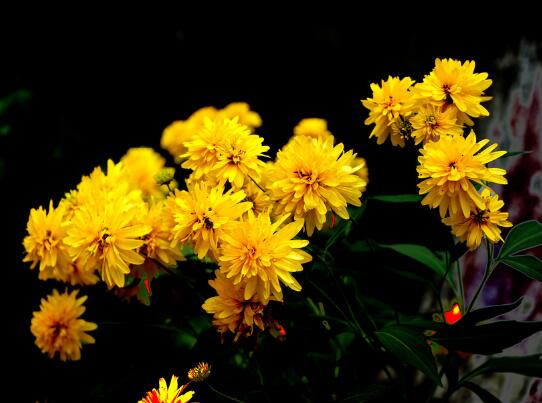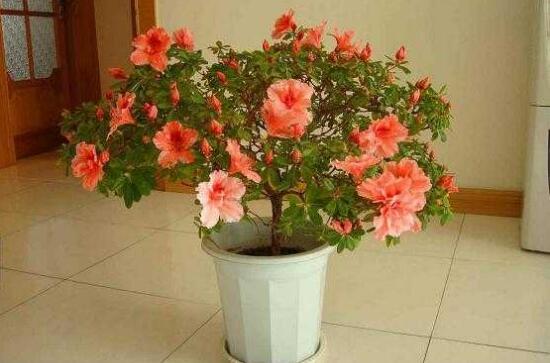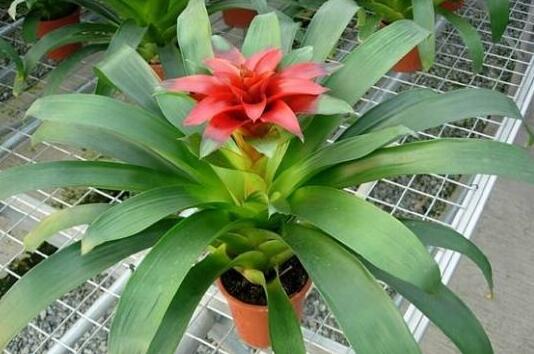What should be paid attention to in the cultivation of marigold? detailed explanation of the culture method of marigold / sufficient light
What should be paid attention to in the cultivation of marigold?

If we want to know what to pay attention to in the cultivation of marigold, we should first understand its growth habits. Marigold is a kind of plant that likes light. Keeping enough light in the process of cultivation can make it grow better. Of course, we need to pay attention to more than that. As for what else, let's move on.
2. detailed explanation of the culture method of marigold
1. Soil management
When cultivating marigold, the choice of soil is more important. Choosing a suitable soil will be more conducive to the growth of marigold. Generally, we can choose sandy soil with high porosity, which has good drainage and air permeability. It can make marigold better absorb nutrients.
two。 Fertilization requirements
In the breeding process of marigold, fertilizer is one of its main nutrients. During the growing period, marigold has a large demand for fertilizer, and it is necessary to apply fertilizer almost once a month to maintain sufficient nutrients to make marigold bloom more.
3. Watering requirement
Watering is an indispensable part of most plants when they are cultured, and marigold is no exception. Reasonable watering is beneficial to the growth of marigold. When watering marigold, we had better keep the principle of dry watering. When the basin soil is dry, the specific frequency depends on the situation.
4. Lighting requirement
Among the marigold culture methods, light is a point that needs to be paid more attention to. It is best to maintain sufficient light when breeding, so that marigold can carry out photosynthesis and make marigold grow better. It can also avoid the harassment of some diseases and insect pests.
5. Pest control
In the process of marigold culture, if improper cultivation is very easy to cause diseases and insect pests and other phenomena, in the emergence of such a phenomenon, we must timely in addition to, if the time is prolonged, it is easy to lead to the phenomenon of plant death, specific prevention and control methods you can refer to the marigold pest control article, here the editor will not introduce too much.
Detailed explanation of indoor rhododendron culture methods and matters needing attention
Rhododendron, alias are Yingshanhong, pomegranate, rhododendron, rhododendron, rhododendron and so on. There are many kinds of rhododendron, the leaf shape of rhododendron is different, its flower 2-6 cluster branch top, Corolla broad funnel-shaped, capsule oval. At present, rhododendron has become one of the most popular important flowers and trees at home and abroad. The editor will tell you the breeding methods and points for attention of azaleas! Culture methods:
First, environmental conditions: it is best to have indoor and indoor environments for the cultivation of rhododendron. The indoor environment is used in winter. Outdoor site, used in summer and autumn, it is better to use clay land, and avoid cement land. The site should be spacious, ventilated and shady, with shade sheds, covered with Reed curtains or protected by natural trees, with a light transmittance of about 30%. Avoid sunning at night.
Second, basin soil requirements: azaleas like loose, strong permeability, good drainage, humus-rich acid soil, the PH value is 5.0-6.0. If you use clay or alkaline soil, it is difficult to live. Summer cuckoos and rhododendrons, in particular, must be mountain soil. The mountain soil needs to be reformed. at present, three kinds of culture soil are usually used.
Third, flowerpot selection: cultivated rhododendron flowerpots, generally choose mud pots and purple sand pots. The mud basin is well ventilated and permeable, and it is used in the cultivation of production units. The molded azaleas, especially the modeled azaleas, are furnished for indoor and outdoor furnishings, generally planted in a beautiful and quaint purple sand basin with delicate texture, rich color and beautiful shape, which can double the ornamental value.
Fourth, improve water quality: it is best to use Rain Water to water azaleas, followed by river and pond water. If tap water is used, it is appropriate to store the water for 1-2 days and let the chlorine volatilize and then use. Add 0.2% ferrous sulfate when you use it, and water it every 10 days during the growing season. Use it frequently to ensure that the soil is acidic.
Fifth, fertilizer and water management: azaleas like yin and dampness, should not be too dry. More moisture is needed during flowering. The azaleas have entered a dormant period in winter and do not require much water. They are generally watered every 4-5 days, and should be carried out around noon on sunny and warm days.
6. outdoor shading: there should be more sunlight before leaving the room and before civilization; during flowering, shading should be carried out for a short time at noon, with a light transmittance of 60%.
7. Shaping and pruning: azaleas grow slowly and are generally allowed to grow naturally, only after flowering, cutting off long branches, diseased and weak branches, deformed branches and damaged branches.
Eighth, disease prevention and pest control: military insects (also known as crown net bugs) are sprayed 1500 times of dimethoate during the damage period, once every 7 days for 3 times in a row. The control methods of terminal bud leaf rollers are mainly killed by artificial capture, and the larvae or pupae can also be sprayed with 2000 times of dimethoate EC or 1500 times of dichlorvos. Note:
1. The roots of azaleas are as thin as hair, and there are few thick taproots. They are afraid of both dry and wet, especially heavy fertilizer. If too much watering, the root is soaked in water, too dry, branches and leaves atrophy, leaf petal fall off, a great threat to the plant, as for watering heavy fertilizer, it will be life-threatening.
2. after the flower fade, the residual flowers must be cut off to avoid fruiting and wasting nutrition. after the new branches germinate, they should be thinned properly and stay according to the growth of the plant.
3. Rhododendron is most suitable to be planted in a muddy basin, because the mud basin absorbs water and breathes air, which is beneficial to the growth and development of roots and luxuriant branches and leaves.
4. Potted azaleas should be placed on the southeast balcony and should be ventilated and moved as little as possible. If it is not ventilated, it is easy to suffer from black spot disease and a large number of fallen leaves.
5. Azaleas should also have moderate requirements for light, and avoid direct light in summer.
6. timely thinning of buds and leaves, removing part of the buds and leaves that have grown too much and too dense, so that the air is well ventilated and nutrients are concentrated on the buds. After the formation of buds, it is necessary to increase nutrition and apply more phosphorus and potassium fertilizer, otherwise the buds will be transformed into leaf buds.
7. The main reasons for azaleas falling leaves and not blooming are: too much direct light in summer, frostbite, too much watering, too thick fertilization, too long indoor time, poor air circulation or dark and humid places, acid rain, and so on. so these situations should be avoided in the process of maintenance.
8. Turning the basin and changing the soil do not need to be carried out every year, usually once every 2 to 3 years, with as little damage to the roots as possible. The time should be after the blossom fade or in autumn, and topirazine should be sprayed at the same time to prevent diseases.
9. The pests of azaleas are mainly red spiders and aphids, which can be sprayed with permethrin, and the effect is better, such as not dying after three days, spray again.
10. The propagation method of rhododendron is mainly cutting. Before and after Grain in Beard, select new branches, 5 cm to 10 cm long, cut off at the bifurcation point, peel off the lower leaves, leave 3 to 4 top leaves, insert the 1x3 of the branches into the soil, spray enough water, and cover with plastic film. It is necessary to strengthen the management at ordinary times and transplant a year later. [conclusion] Bai Juyi said: "if you take a closer look at the two branches in your hand, it doesn't seem to be in the world. This thing in the flower is Xi Shi, and the whip Rong peony is the mother." More Plant Information > > | touch incense | marigold planting | Happiness tree conservation method | Flower picture and name | the function of green radish flower | Wanlian | | Jiuli fragrant bonsai | crab claw orchid culture method | cactus culture method | how to raise gardenia | the role of lavender |
| | foliage plants | Aquatic plants | flowering plants | Insectivorous plants | bryophytes |
| | overall wardrobe | effect picture of rural cottage | Shelf decoration picture | ceiling keel picture | Nanmu furniture picture |
Detailed explanation of culture methods and matters needing attention of azaleas in rhododendron culture room
Rhododendron, alias are Yingshanhong, pomegranate, rhododendron, rhododendron, rhododendron and so on. There are many kinds of rhododendron, the leaf shape of rhododendron is different, its flower 2-6 cluster branch top, Corolla broad funnel-shaped, capsule oval. At present, rhododendron has become one of the most popular important flowers and trees at home and abroad. The editor will tell you the breeding methods and points for attention of azaleas! Culture methods:
First, environmental conditions: it is best to have indoor and indoor environments for the cultivation of rhododendron. The indoor environment is used in winter. Outdoor site, used in summer and autumn, it is better to use clay land, and avoid cement land. The site should be spacious, ventilated and shady, with shade sheds, covered with Reed curtains or protected by natural trees, with a light transmittance of about 30%. Avoid sunning at night.
Second, basin soil requirements: azaleas like loose, strong permeability, good drainage, humus-rich acid soil, the PH value is 5.0-6.0. If you use clay or alkaline soil, it is difficult to live. Summer cuckoos and rhododendrons, in particular, must be mountain soil. The mountain soil needs to be reformed. at present, three kinds of culture soil are usually used.
Third, flowerpot selection: cultivated rhododendron flowerpots, generally choose mud pots and purple sand pots. The mud basin is well ventilated and permeable, and it is used in the cultivation of production units. The molded azaleas, especially the modeled azaleas, are furnished for indoor and outdoor furnishings, generally planted in a beautiful and quaint purple sand basin with delicate texture, rich color and beautiful shape, which can double the ornamental value.
Fourth, improve water quality: it is best to use Rain Water to water azaleas, followed by river and pond water. If tap water is used, it is appropriate to store the water for 1-2 days and let the chlorine volatilize and then use. Add 0.2% ferrous sulfate when you use it, and water it every 10 days during the growing season. Use it frequently to ensure that the soil is acidic.
Fifth, fertilizer and water management: azaleas like yin and dampness, should not be too dry. More moisture is needed during flowering. The azaleas have entered a dormant period in winter and do not require much water. They are generally watered every 4-5 days, and should be carried out around noon on sunny and warm days.
6. outdoor shading: there should be more sunlight before leaving the room and before civilization; during flowering, shading should be carried out for a short time at noon, with a light transmittance of 60%.
7. Shaping and pruning: azaleas grow slowly and are generally allowed to grow naturally, only after flowering, cutting off long branches, diseased and weak branches, deformed branches and damaged branches.
Eighth, disease prevention and pest control: military insects (also known as crown net bugs) are sprayed 1500 times of dimethoate during the damage period, once every 7 days for 3 times in a row. The control methods of terminal bud leaf rollers are mainly killed by artificial capture, and the larvae or pupae can also be sprayed with 2000 times of dimethoate EC or 1500 times of dichlorvos. Note:
1. The roots of azaleas are as thin as hair, and there are few thick taproots. They are afraid of both dry and wet, especially heavy fertilizer. If too much watering, the root is soaked in water, too dry, branches and leaves atrophy, leaf petal fall off, a great threat to the plant, as for watering heavy fertilizer, it will be life-threatening.
2. after the flower fade, the residual flowers must be cut off to avoid fruiting and wasting nutrition. after the new branches germinate, they should be thinned properly and stay according to the growth of the plant.
3. Rhododendron is most suitable to be planted in a muddy basin, because the mud basin absorbs water and breathes air, which is beneficial to the growth and development of roots and luxuriant branches and leaves.
4. Potted azaleas should be placed on the southeast balcony and should be ventilated and moved as little as possible. If it is not ventilated, it is easy to suffer from black spot disease and a large number of fallen leaves.
5. Azaleas should also have moderate requirements for light, and avoid direct light in summer.
6. timely thinning of buds and leaves, removing part of the buds and leaves that have grown too much and too dense, so that the air is well ventilated and nutrients are concentrated on the buds. After the formation of buds, it is necessary to increase nutrition and apply more phosphorus and potassium fertilizer, otherwise the buds will be transformed into leaf buds.
7. The main reasons for azaleas falling leaves and not blooming are: too much direct light in summer, frostbite, too much watering, too thick fertilization, too long indoor time, poor air circulation or dark and humid places, acid rain, and so on. so these situations should be avoided in the process of maintenance.
8. Turning the basin and changing the soil do not need to be carried out every year, usually once every 2 to 3 years, with as little damage to the roots as possible. The time should be after the blossom fade or in autumn, and topirazine should be sprayed at the same time to prevent diseases.
9. The pests of azaleas are mainly red spiders and aphids, which can be sprayed with permethrin, and the effect is better, such as not dying after three days, spray again.
10. The propagation method of rhododendron is mainly cutting. Before and after Grain in Beard, select new branches, 5 cm to 10 cm long, cut off at the bifurcation point, peel off the lower leaves, leave 3 to 4 top leaves, insert the 1x3 of the branches into the soil, spray enough water, and cover with plastic film. It is necessary to strengthen the management at ordinary times and transplant a year later. [conclusion] Bai Juyi said: "if you take a closer look at the two branches in your hand, it doesn't seem to be in the world. This thing in the flower is Xi Shi, and the whip Rong peony is the mother." More Plant Information > > | touch incense | marigold planting | Happiness tree conservation method | Flower picture and name | the function of green radish flower | Wanlian | | Jiuli fragrant bonsai | crab claw orchid culture method | cactus culture method | how to raise gardenia | the role of lavender |
- Prev

How to raise zinnia, zinnia cultivation methods and precautions/picking is very important
Zinnia, a very beautiful herbaceous plant, it has a long flowering period, rich colors, and easy to feed, so it is welcomed and loved by the majority of flower friends. In life, many flower friends will plant zinnia at home, but many of them do not know how to raise zinnia. in this regard
- Next

Canna potted how dwarf, Canna potted cultivation method/change pot is very critical
Canna is a relatively easy to raise plants, we have also introduced in detail Canna breeding methods and precautions, but if it is potted planting, then what will be different? Today we will take a look at Canna potted farming methods. Canna pot culture method to choose a deeper pot larger
Related
- Fuxing push coffee new agricultural production and marketing class: lack of small-scale processing plants
- Jujube rice field leisure farm deep ploughing Yilan for five years to create a space for organic food and play
- Nongyu Farm-A trial of organic papaya for brave women with advanced technology
- Four points for attention in the prevention and control of diseases and insect pests of edible fungi
- How to add nutrient solution to Edible Fungi
- Is there any good way to control edible fungus mites?
- Open Inoculation Technology of Edible Fungi
- Is there any clever way to use fertilizer for edible fungus in winter?
- What agents are used to kill the pathogens of edible fungi in the mushroom shed?
- Rapid drying of Edible Fungi

